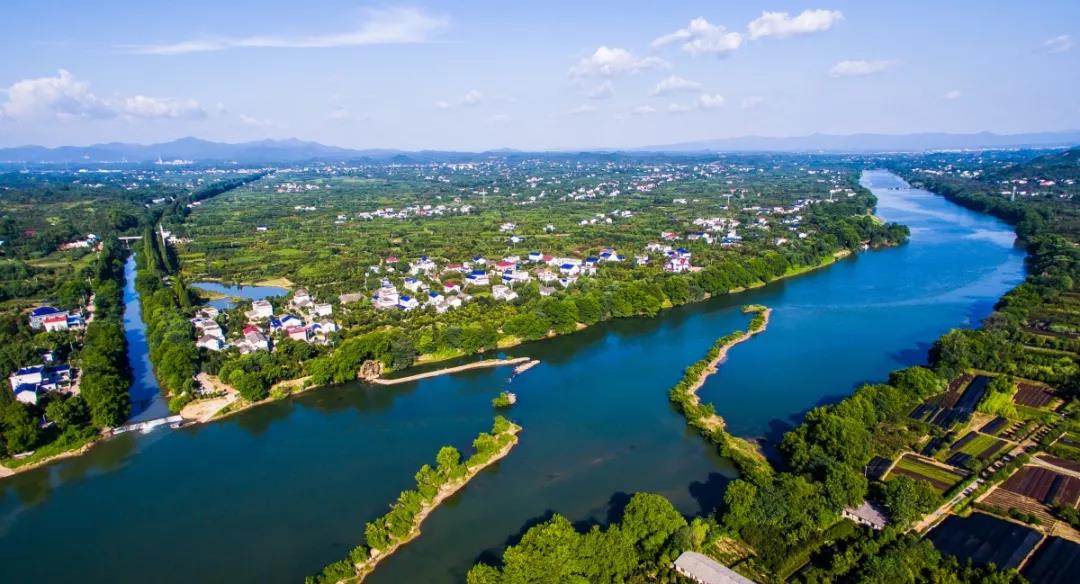A panorama captures Changsha county by day. [Photo provided to chinadaily.com.cn] An underdeveloped agricultural county 40 years ago, Changsha county is now a rising star in central China. Located in central Changsha city, Changsha county, also called Xingsha, is the traffic center of Hunan province. It boasts a science and technology industrial park and a comprehensive bonded zone. Though it has 12 poor villages, it still ranks fifth among the top 100 counties nationwide and is also one of 18 reform and opening-up pilot zones. Changsha city’s urbanization rate in 2017 reached 77.59 percent, while Changsha county’s was 12 points lower at 65.2 percent. Among its 114 villages, 52 (45.6 percent) recorded an average operating income of no more than 50,000 yuan, and 91 villages (79.8 percent) registered an average of no more than 150,000 yuan. Changsha county is now a center for the development of traditional industries, specialty industries, the tourist industry, and processing industry. The county is also exploring new development models in the hopes of building a thriving countryside. It’s said that Changsha county boasts 6.56 billion yuan of the total output recorded by the farming, forestry, herd and fishery industries. It is home to 235 agricultural processing companies and 22 enterprises with annual sales of more than 100 million yuan from January to August in 2018. Those processing companies have achieved a total output of nearly 10 billion yuan, while the tourism industry’s total income stood at 8.3 billion yuan, a year-on-year increase of 16.3 percent. Bringing capital to countryside Xunlonghe village, a mountainous and remote area, in just a matter of years has identified a path for rural revitalization, a path that has helped it shake the label it once held as a “provincial-level impoverished village”. A series of pilot land reforms were carried out in Xunlonghe village, such as land right confirmation and land circulation. The village also established a platform to develop its collective economy by land transfer. Aiming to achieve “rural urbanization”, it has attracted State-owned and private enterprises to invest in its industries. As a result the village’s five primary industries – ecology, culture, education, healthcare, and tourism – have gained momentum. Xunlonghe has capitalized on its rural resources, and locals’ average annual income has reached 80 thousand yuan. Its collective economy is now valued at at 1.38 million yuan, an increase of 20 times over since 2009. During Xunlonghe’s transformation, its infrastructure has gradually improved. Along the way when the village encountered a shortage of funds, villagers raised money to build a home stay facility. The project is now a model for establishing cooperative relationships between village committees, companies and farmers. The village committee takes the leading role. Companies are responsible for professional training while villagers raise money to build houses by themselves. Thanks to improved infrastructure and guesthouses, the village welcomed 178,000 visitors during 2018’s Spring Festival. The isolated region is now considered a land of idyllic beauty where tourists can enjoy beautiful scenery. Industrial parks drive development further Changsha county is home to an increasing number of tourist attractions, such as fruit picking, facilities for camping trips, and the chance to sample and experience local specialties. Guided by the principle of all-for-one tourism, the county has rebuilt a number of towns and villages, which are now ideal for living, traveling and employment. It is home to 18 city-level demonstration villages and eight city-level tourism villages, each with its own distinctive features. Over the past five years, the county has won nearly 7 billion yuan in investment from non-governmental organizations. In the first half of 2019, the Shanhe Health Valley project was launched in Xinming village, while a major water project is under construction at Xunlong River. Changsha county meanwhile continues to develop its scenic spots, with six complete tourism routes with different features developed across the county. Gaoqiao, a small town in Changsha county, has commenced construction of the Hunan agricultural technology base. Based on scientific research on medicinal plants, work has also begun on other similar projects. Gaoqiao town has made full use of its red tourism resources (the former residence of Li Weihan and Liu Zhixun, for example), local scenic spots (Zizhushan scenic resort) and historic sites (Jinqiao Old Street) to develop its industries. The company Changsha Chunhong Flower Co has meanwhile built a large-scale pastoral complex in Chunhua town with a total area of nearly 4,000 square meters and six districts, which houses more than 100 flower varieties. The complex covers a total planned construction area of 10,000 square meters, with total investment into the project to reach 500 million yuan. The project promotes the development of more than 50 businesses and 200 households in the area through the cooperation of the company, complex, businesses and farmers. A complete industrial chain has been formed that integrates flower display, sightseeing, fitness and entertainment, bringing considerable economic, social and ecological benefits. The project, it is predicted, will give a significant boost to the development of new agricultural businesses.
Changsha county shows the way for rural development
Editor:李莎宁
Source:chinadaily.com.cn
Updated:2019-05-24 09:41:22
Source:chinadaily.com.cn
Updated:2019-05-24 09:41:22
Special
Contact
Welcome to English Channel! Any suggestion, welcome.Tel:0731-82965627
lisl@rednet.cn
zhouqian@rednet.cn











